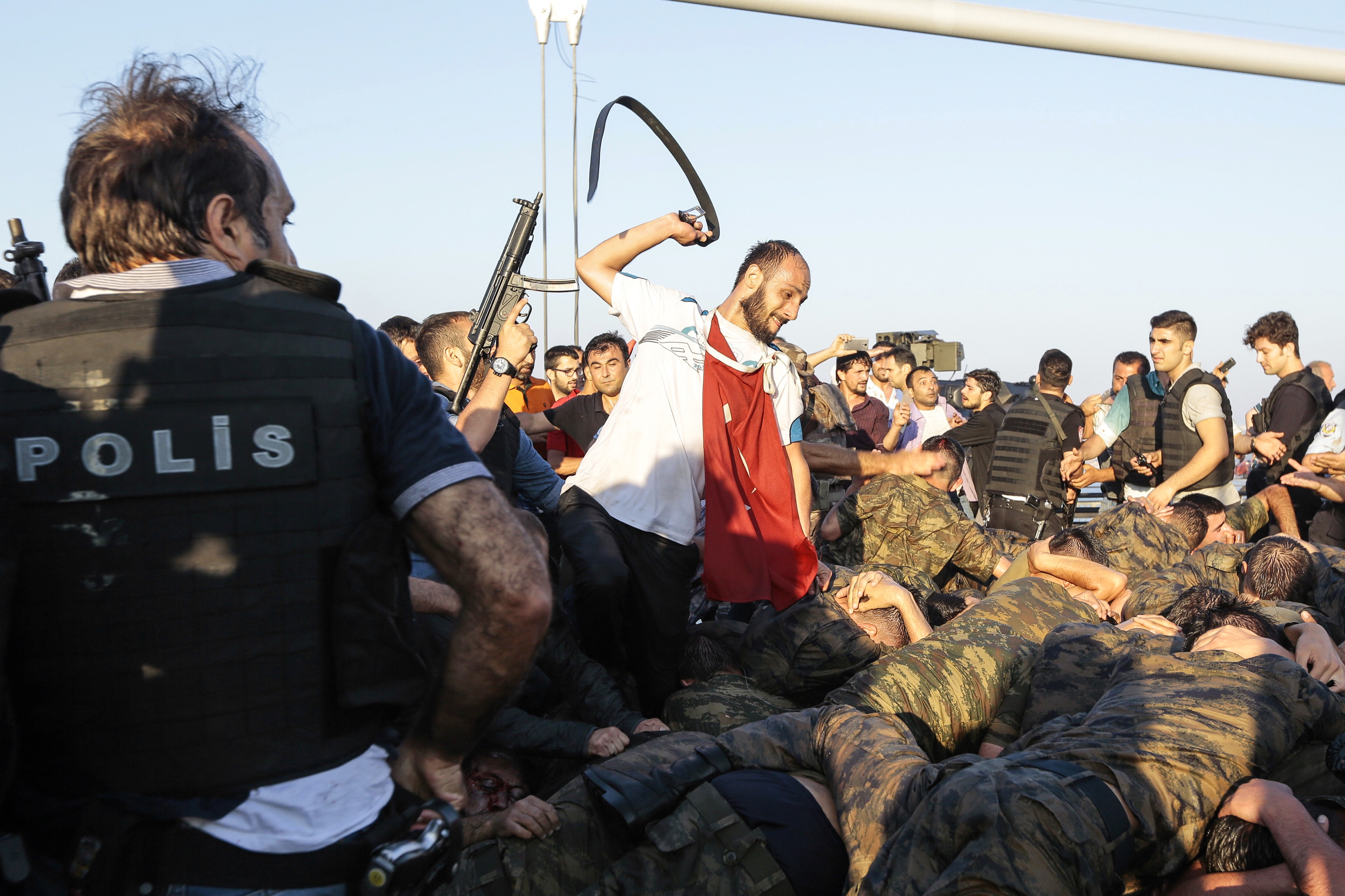
CIVILIANS reclaimed Turkey from their own military yesterday after helping to end a coup to overthrow ruling President Recep Tayyip Erdogan.
Ordinary Turks dragged rifle-wielding soldiers from their tanks and beat them as they took back control of their country in dramatic fashion. In one striking image, a Turkish civilian whipped rebel fighters with his belt after they had surrendered to police.
President Erdogan told the nation his government was in charge after the coup attempt on Friday brought a night of explosions, air battles and gunfire that left at least 161 dead and 1500 wounded.
He also called on people to “keep on owning the streets” over fears of a fresh uprising.
The chaos capped a period of political turmoil in Turkey which critics blame on Erdogan’s increasingly authoritarian rule, which has included a government shake-up, a crackdown on dissidents and opposition media and renewed conflict in the mainly Kurdish areas of the south-east.
Fighting continued throughout yesterday with the sounds of huge blasts echoing across the capital Ankara and Istanbul.
More than 2800 soldiers, including high-ranking officers, have been arrested.
Meanwhile, Turkish Prime Minister Binali Yildirim described the night as a “dark stain for Turkish democracy”.
He pinned blame for the attempted coup on a “parallel terrorist organisation” – a reference to the movement led by Fethullah Gulen, a powerful but reclusive US-based Muslim cleric.
Analysis
by Tom Stevenson, Istanbul based reporter
HAD the faction of the Turkish armed forces that attempted to seize control of Istanbul and Ankara on Friday succeeded, the consequences for Turks would have been grave.
Images of helicopters assaulting the parliament and firing on anti-coup protesters would have been a mere taste of the violence that would have inevitably followed, in all likelihood consuming the entire country.
The consequences for the region, and Europe, would have been scarcely less dire.
As it stands Turkey is a finely balanced electoral autocracy, a deeply divided society ruled over by a president with few scruples and a lust for power.
But while Mr Erdogan’s order is unjust, even cruel, it is not completely illegitimate.
A junta run by the soldiers I witnessed filing into central Istanbul would have been just that – and would not have been accepted. A vicious civil war on the model of the one the Turkish army has already started against the Kurds would surely have followed.
Turkey is too important to implode. Its fate is entwined with the peace and prosperity of south-east Europe, the outcome of the Syrian civil war, and a humane settlement of the migrant crisis. The status-quo is unstable but a military coup promised blood and no hope for progress on any of these matters.
READ MORE
VIDEO: Coup attempt in Turkey explained in 90 seconds
UK will support Turkish government despite coup, says Boris Johnson

Enjoy the convenience of having The Sunday Post delivered as a digital ePaper straight to your smartphone, tablet or computer.
Subscribe for only £5.49 a month and enjoy all the benefits of the printed paper as a digital replica.
Subscribe